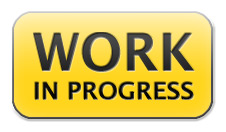Working with Keys
Keys are the basic building blocks of animation in Terragen 2. This chapter helps you understand what animation keys are and how to work with them.
For a hands-on example of creating an animation and working with keys please read this tutorial.
What are keys?[edit]
Keys are specific points in an animation which you set. When you want to animate a parameter you will typically add at least a start key and end key. When your render an animation the value of the parameter will then be animated between the start key and the end key. You don't need add keys at every frame. Terragen 2 calculates the values in between each key using a process called "interpolation". You can find out more about interpolation in the chapter on interpreting curves in the Curve Editor.
Keys are really a combination of two values. The first value is the frame the key is set on. You can also think of this as the time. The second value is the value of the param at the frame the key is on.
Creating keys[edit]
There are two ways to create keys. The first is to use the animation button for a parameter. The other is to insert them using the editors in the Animation Panel such as the Curve Editor and the Dope Sheet.
It's important to note that to get a parameter to show in the Animation Panel you first need to set a key on it using the animation button for the parameter. That being the case we'll discuss the animation buttons first.
Every parameter which can be animated has an animation button. When you click the button a menu pops up which lets you choose from several things. One is "Set animation key". This has a submenu which lets you set a key on the parameter or, if the parameter has multiple components, on the different components. When you set a key on a parameter a new key is created at the current frame. The current frame is the one the timeline at the bottom of the main window is set to.
You can tell a parameter has a key set on it because any editable text for the parameter will change colour. The text will be green if there is a key set at the current frame. For frames with no key the text will be blue.
Most animation will need at least two keys to be useful. You can set another key on the parameter by changing the current frame and then setting a key at the new frame.
Although it's certainly possible to create animations using only animation buttons it's a lot easier if you use the Animation Panel. The editors in the Animation Panel let you insert keys visually. As mentioned above you do need to set at least one key on a parameter before it will show up in the Animation Panel. There is a tutorial on creating animations using the Curve Editor here. It's also worth reading the Animation Panel reference.
Editing keys[edit]
Metakeys[edit]
When you use the Dope Sheet you may notice that some of the keys are drawn as yellow diamonds instead of white ones. These yellow keys are special keys called metakeys. You will only see metakeys for parameters which have multiple components (i.e. vectors or colours). You will also only see metakeys in rows in the Dope Sheet for parameter level items in the node list.
A metakey is like a summary. If you look at the image below you will see that every frame there is a metakey there is one or more normal keys below it at the same frame. Metakeys are helpful for giving you an overview of the animation without having to expand a param to show all its components.
Metakeys allow you manipulate more than one key at once. When you select a metakey it also selects all the normal keys below it. Any operation you perform on the metakey will also happen to the normal keys at that frame. Looking at the image above you will see that there are keys for each of the R, G and B components of the Colour param at frame 5. If you select the metakey at frame 5 you can move all of those keys at once, instead of having to select all the normal keys and move them or move them individually. You could also delete all the keys at frame 5 by selecting the meta key at frame 5 and then deleting it.
You don't need to insert metakeys yourself. The Dope Sheet automatically inserts them when you insert a normal key. However you can insert a metakey just like a normal key. When you insert a key in a parameter level row a metakey is inserted and a normal key is inserted at that frame for every component of the parameter.
A parameter is an individual setting in a node parameter view which controls some aspect of the node.
The Node List is a part of the Terragen interface that shows a list of nodes along the left side of the application window. The Node List generally shows only those nodes that are relevant to the current Layout (e.g. Terrain, Atmosphere). It sometimes includes buttons or other controls that are specific to a particular Layout as well. The Node List is hierarchical and each level is collapsible.
